TL;DR: RDI Corporation treats being coachable as the core competency. Metrics matter, but behavior change powers them. Through a coaching‑first L&D model, a Bench Leadership program that normalizes access to executives, a codified culture of Earn, Learn, Live Well, and an in‑house learning stack with 500+ courses, RDI develops people who grow faster and stay longer. AI removes clicks so humans can connect. The mantra tying it together is simple: start now.
Why “coachable” beats “experienced” for durable performance
Most companies start with the scorecard. RDI starts with the person. Yes, the team tracks revenue and cost, but they refuse to coach the number. They coach the behaviors that move the number.
“Metrics only do two things. They measure revenue up or money saved. People are not numbers.”
This is the quiet unlock. When coaching focuses on incremental, repeatable behaviors, adult learners choose the change for themselves. That is how gains compound. Think $10 saved weekly or 10,000 steps daily. Small, consistent behaviors reshape outcomes.
Why it works:
- Adult motivation is intrinsic. Coaching helps people align work with personal progress.
- Behavior is observable and coachable; numbers are not.
- Momentum builds confidence → capability → sustained metrics.
A coach’s origin story that shaped a program
Chris Griffin began as the “anti‑sales” rep. A great coach reframed his lens from quotas to choices. That shift sparked a career in training and later L&D leadership at RDI. The lesson stuck. Coaching is not remedial—it’s how capable people get compounding returns.
“The first time I was asked to think critically about my behaviors, everything clicked.”
Today that experience informs how RDI trains trainers, designs curriculum, and measures impact. Replicate the behavior insight and performance follows.
How RDI screens for the coachable mindset
RDI hires for potential over pedigree. Experience helps, but mindset is the multiplier. The prompt that reveals it is disarmingly simple:
“What do you want to be when you grow up?”
You’ll hear aspirations, not resumes. People who want to learn will learn fast. In a company with many tracks and sites, that openness matters more than perfect fit on day one.
Signals of coachability
- Clear personal goal in the candidate’s own words
- Willingness to try, reflect, and adjust
- Curiosity about how the broader business works
Bench Leadership: access creates acceleration
Within the first 90 days, high‑potential agents can join Bench Leadership. It’s supplemental to the role and voluntary by design. The first course centers on networking. Participants must reach out to leaders across departments, including directors and executives.
Why this matters: the best operational ideas often come from the entry level because they live the systems daily. Bench Leadership legitimizes that truth. It turns organic bottom‑up innovation into a managed pipeline.
“Most of our best ideas start at the front line. Bench makes sure they get heard.”
Results arrived faster than planned. During the first cohort, roughly a third of participants moved into expanded roles within three months as leaders spotted talent early.
Bench mechanics to borrow:
- Give explicit permission to contact executives
- Assign real homework that creates relationships
- Move from “awareness” to “solutioning” so ideas ship
Culture you can practice: Earn, Learn, Live Well
RDI codified its philosophy so it shows up in daily decisions.
- Earn well. Pay competitively and teach financial literacy. Leaders are trained to discuss budgets, credit, and planning. Money is part of well‑being, so it’s part of leadership.
- Learn well. Design for a seamless path from classroom to production. Address varied adult learning styles. Build confidence before go‑live. Keep learning alive with leadership courses and self‑serve content.
- Live well. Provide gyms, nutrition support, and hardship resources. The company invests in the person so the person can invest in the work.
“Our culture is our people. Our people are our culture.”
This is how a company retains ambitious people in a job‑hopping market. It turns a job into a trajectory.
Building the internal academy, one problem at a time
RDI didn’t buy a learning library and call it done. The team built an in‑house system that solved real operational pain, then kept layering capability. It started with billing and time logs across many sites. It evolved into Core, the internal platform that now aggregates QA, visual heat maps, and learning.
Courses emerged the same way. Solve a live need. Document it. Turn it into a reusable asset. Repeat. Over time those assets became a 500+ course catalog, ranging from how to change a tire to programming fundamentals.
Why it scales:
- Content is specific to how work gets done at RDI.
- The platform centralizes data, not just content.
- Each new course lowers onboarding friction for the next person.
“Five hundred problems later, we had five hundred courses.”
Where AI fits: remove clicks so humans can connect
RDI rejects the notion that AI should replace the human on the line. The goal is to remove friction so people can talk to people.
Practical uses that deliver value now:
- Call simulators. Voice models that answer in varied ways so reps practice realistic dialogs before day one.
- Knowledge assistants. Ask a question and get the exact procedure or record you need without hunting.
- Reduced swivel‑chair. Fewer clicks, faster retrieval, more focus on listening.
“AI should remove clicks, not replace connection.”
The principle is consistent: Use AI to speed the path to the human moment. Don’t let it replace the moment.
Train the trainer, then invite dissent
RDI staffs 30–50 trainers across sites and seasons. New trainers earn credentials in public speaking and facilitation. Then they get an unusual prompt from leadership:
“Now tell me what I’m wrong about.”
That invitation keeps the program modern. It encourages the next generation to challenge methods, propose changes, and own outcomes. The training department doesn’t end at the classroom door. It’s an expanded universe of leadership development, culture ambassadors, and AI products that reinforce learning in the flow of work.
Start now: the operating principle behind a coachable culture
Chris’s advice to his younger self is also the simplest operating principle for RDI’s L&D.
“The best time to start is now.”
Not next quarter. Not once the playbook is perfect. Start. If it works, scale it. If it doesn’t, change it. That bias for action is how an internal course library grows from one slide deck to hundreds. It’s how a networking assignment turns into a talent engine. It’s how coachable people become capable leaders.
Practical takeaways for L&D leaders
- Coach behaviors, not numbers; write coaching plans in verbs, not metrics.
- Hire for learning velocity; ask about future identity, not past titles.
- Normalize executive access; put relationship‑building in the curriculum.
- Codify culture as teachable practices for money, learning, and life.
- Build content from real problems; treat each fix as a reusable module.
- Use AI to cut friction; protect the human conversation.
- Invite your trainers to disagree; it keeps the system alive.
Recommended next step: make coaching the system
If you’re ready to operationalize mentorship and coaching at scale, see how PlusPlus structures programs, measurement, and matching in this use case: Mentorship & Coaching on PlusPlus. It’s a fast path to a coachable culture with compounding returns.

